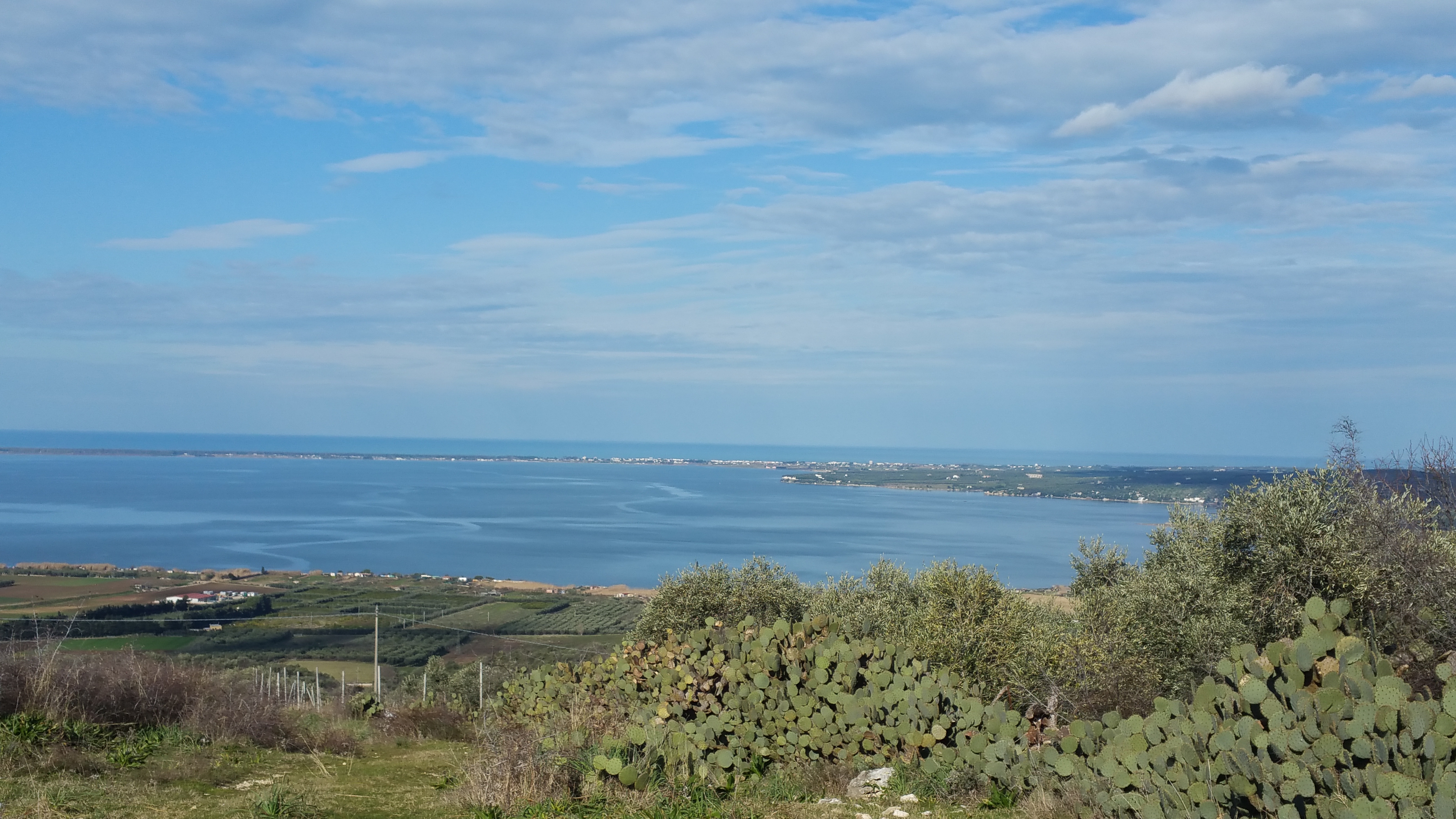The formation of a coastal cordon, which occurred due to the sea currents and winds that transported the debris from the rivers that have their mouths in the middle Adriatic, closed this marine inlet, thus giving rise to the "lake" of Varano.
Located on the northern coast of the Gargano peninsula, it is traditionally called a lake, even though it is a lagoon and is therefore a salt water basin, despite having a salinity about a third lower than that of the nearby Adriatic Sea. Excavated in the Gargano limestone mass , between the promontory of Monte Devio and the tip of Rodi Garganico, has a vaguely trapezoidal shape that extends for a width of about 10 km, being embedded within the Gargano promontory for about 7 km.
Its perimeter measures approximately 33 km, its surface is equal to 60.5 km² and the depth of the water varies from 2 to approximately 5 meters (with an average of 3 metres), depending on the place, as you move further away from the shore towards the center of the basin.
To the north it is separated from the Adriatic Sea by a very narrow line of land, called an "island", about 10 km long and 1 km wide, covered with pine trees, eucalyptus and other plants.
The lake is fed by two underground springs and communicates with the Adriatic Sea via two canals: the mouth of Varano and the mouth of Capojale.
The waters of the lake bathe the municipal territories of Cagnano Varano, Carpino and Ischitella. The settlement of Foce Varano, a hamlet of Ischitella and the settlement of Foce Capoiale, a hamlet of Cagnano overlook the lake.
Training
In the 1st century AD, according to the documentation of Pliny the Elder, in place of the current lake there existed only an inlet (or a gulf) called Seno Uriano by the Latin naturalist.
The formation of a coastal cordon, which occurred due to the sea currents and winds that transported the debris from the rivers that have their mouths in the middle Adriatic, closed this marine inlet, thus giving rise to the "lake" of Varano.
The formation of the lake can be dated around the year 1000. In 1158 the lake was mentioned for the first time in the bull of Pope Adrian IV.
 Русский
Русский  Spanish
Spanish  日本語
日本語  Italiano
Italiano  Ελληνικά
Ελληνικά  Deutsch
Deutsch  French
French  English
English 